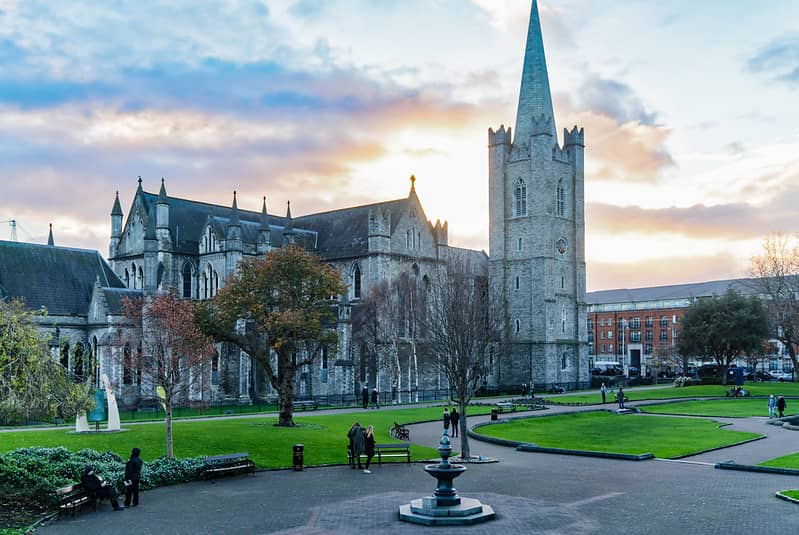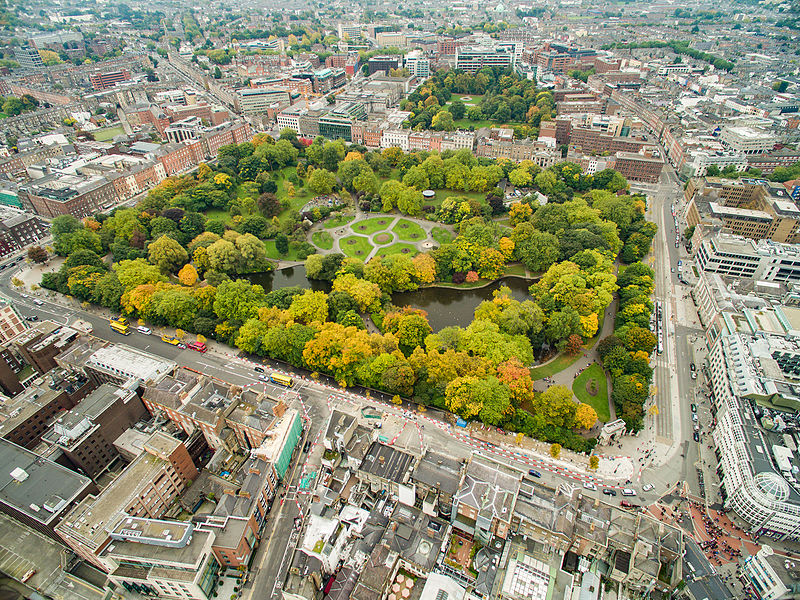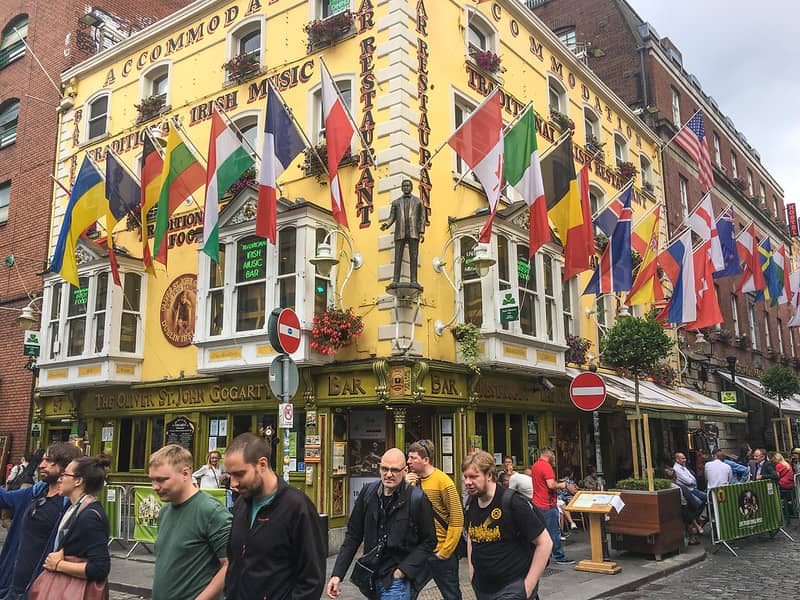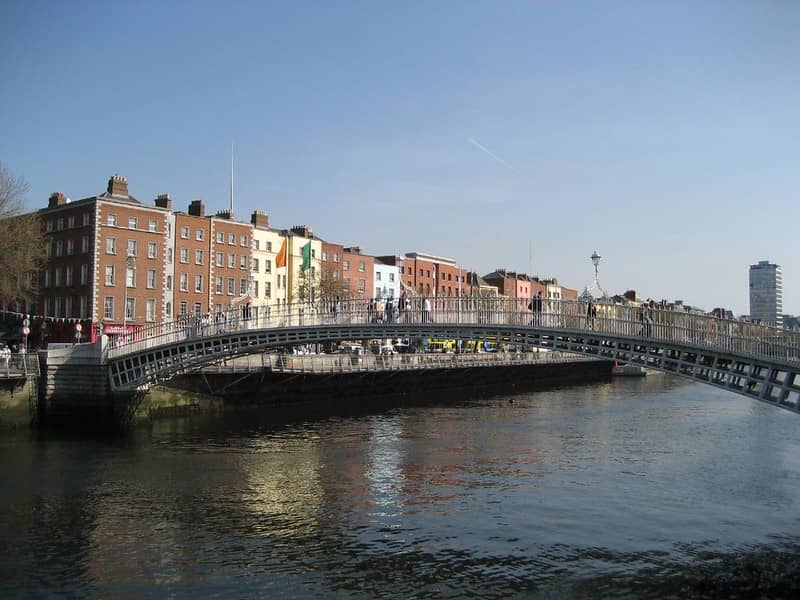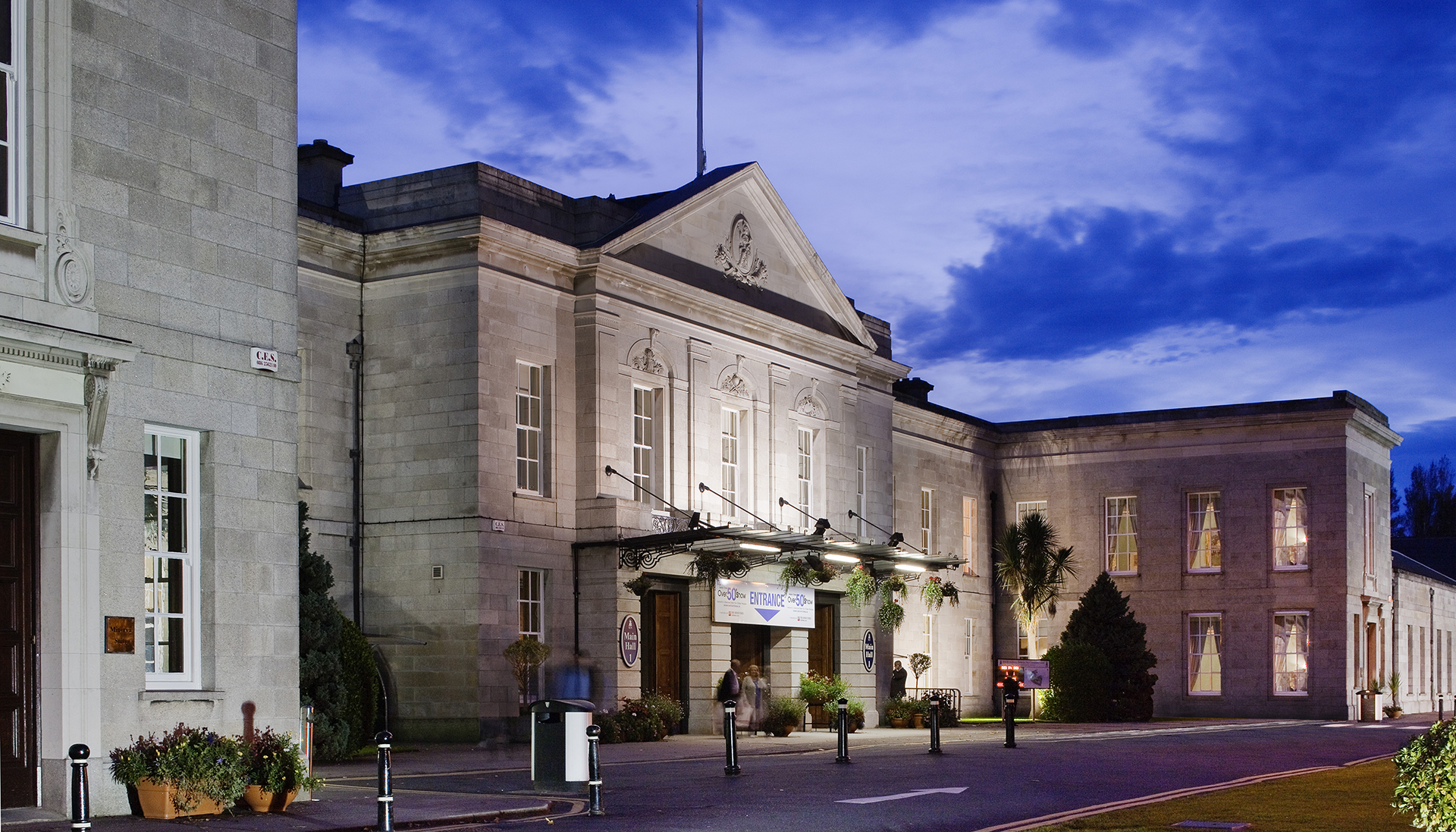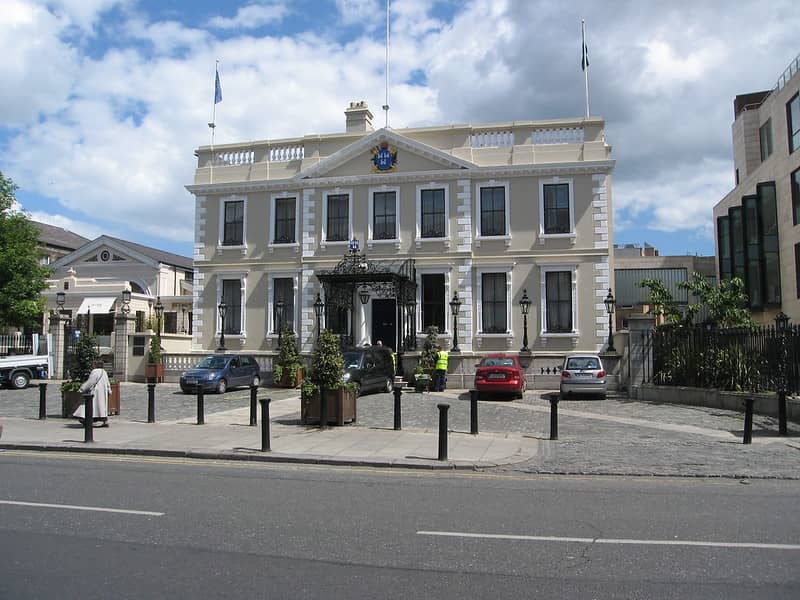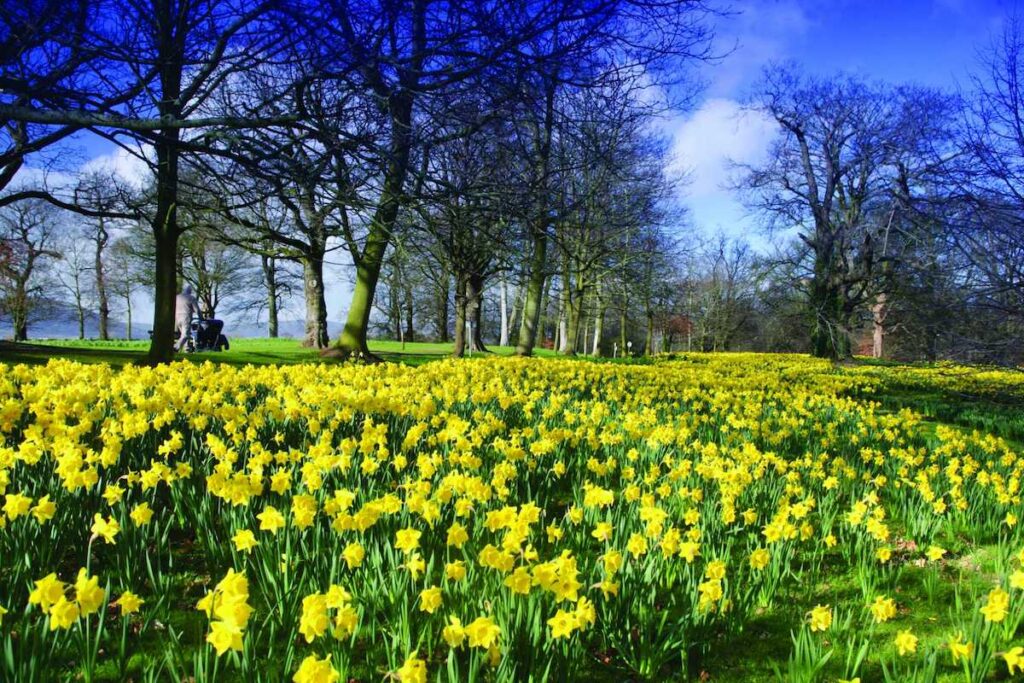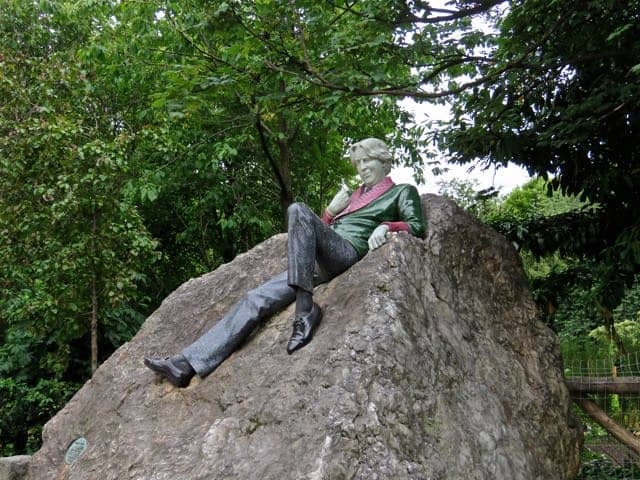towering townhouses, treacherous tenements and Imposing mansions
If Dublin’s city’s historic structures could speak, they would tell a story of the changes in its fortunes and county.
Fortunately, many of the capital’s most important and interesting buildings are open to the public. They invite visitors to explore them through free walking tours and exhibits.
Phoenix Park is where you’ll find two of the most impressive buildings: Áras a tUachtarán (the President’s official residence) and Farmleigh House (an elegant Georgian and Victorian confections).
For literary fans, a visit to the childhood home of Oscar Wildes is an enjoyable way to spend some time; for historians, visiting the former residence of a wealthy gentleman who lived during the 18th and 19th centuries is fun.
Áras an Uachtaráin
Aras na nUachtarán is the official residence of An Taoiseach (Prime Minister). It was built in 1751 and is located in Phoenix Park in County Meath. Free guided visits take place every Saturday at 11am.
The “Irish Whitehouse”, or Áras an Iarainn, was designed initially by park rangers and amateur architects Nathaniel Clements. It consisted of 95 rooms and was acquired in 1938 by the viceroys who ruled Britain in Ireland. Since then, it has been the official residence of the President of Ireland. Numerous world leaders have stayed here.
The formal garden was designed in 1840. It contains many Victorian elements, including ceremonial trees, a woodland, a parkland, paths, ornamental lakes, and a walled garden that provide fruit, vegetables, and flowers for the áras (the official residence of the President). The walled garden, managed sustainably and having organic status, is used to grow fruit, veggies, and flowers for the President’s private use.
Visitors can come on Saturdays to see the house where our head of state lives. They open every Saturday. You’ll get a ticket if they have any free slots left. Their office is just across the road. Bring your photo ID.
Location: Castleknock (part of Phoenix Park), Dublin 8, Co. Dublin, D08 E1W3, Ireland
Website: https://heritageireland.ie/visit/places-to-visit/aras-an-uachtarain/
Cost: Free
Opening hours:
Visit Duration
We recommend planning to spend 1 to 1 hour 30 minutes here.
Ardgillan Castle and Gardens.
Ardgillan castle and garden is a hidden gem in beautiful parklands overlooking the Irish sea. It offers visitors stunning views of the Mourne mountains and Lambay island.
Ardgillan Castles and Demesnes is a beautiful place in County Dublin, Ireland. It is one of the best places to visit if you love nature and history. The property consists of 194 acres of parkland, woodland and gardens.
The main building is an impressive 18th-century stone mansion surrounded by a moat. The grounds also include several outbuildings, including a stable block, stables, coach houses, a barn, a garage, a dovecote, a greenhouse, a walled garden, a folly, a summerhouse and a water tower.
Originally called Prospect House, the central block was built by Robert Taylor around 1738, with the western and eastern wings added later. Ardgillan castle also has a permanent exhibit of 17th-century Down survey maps of Ireland created by Thomas Taylor, Robert’s grandfather.
The original garden is an attractive example of what can be achieved with imagination and creativity. In addition to the castle, the estate also includes a Walled Garden, a Rose Garden, and an extensive collection of rare plants. The Walled Garden contains several unusual architectural elements, including an elaborate Alcove Wall.
Today the demesnes are beautiful visitor attractions with a range of facilities, from castles and gardens to theatres and cafés, as well as a fairy trail for kids and an adventure park for adults.
Location: Ardgillan Demesne, Balbriggan, Co. Dublin, K32 WX87, Ireland
Website: https://ardgillancastle.ie/
Opening hours: Open 7 days, 9am to 5pm
We recommend planning to spend up to 2 hours here
Casino Marino
The casino is a miniaturised architectural masterpiece. The casino, meaning “small house,” was commissioned by Lord Charleton in the mid-18th century. It is a Palladio neoclassical garden shoppe only 5 kilometres north of Dublin city centre.
Casino Marino is a fantastic building in terms of structural and historical value. Sir William Chambers designed the casino as a pleasure house for Lord Charlemont, near his home in what was then the countryside. It is a gem among 18th-Century neoclassical architectural styles. In fact, it’s one of the finest casinos in Europe.
The building looks like a temple, with exquisite carvings and sculptures on its four sides. Within, the visitor marvels at the inventive use of space and architectural techniques defying reason.
Location: Cherrymount Cres, Marino, Dublin 3, Ireland
Website: https://heritageireland.ie/places-to-visit/casino-marino/
Farmleigh House
Farmleigh House in Dublin, Ireland, is known for its Georgian-Victorian architectural style, art galleries, and beautiful gardens. It was once owned by the Guinness family, who built the mansion in 1832. Today, the house is open to the public during non-visiting hours and hosts many cultural events and outdoor festivals.
Farmleigh is located in the northwest corner of Phoenix Park and is adjacent to the Chapelizod and Castleknock areas of Dublin City. It covers an area of 78.5 hectares and includes many beautiful structures, including the main building and sunken and walled gardens. There is also a famous clock and a lake.
Farmleigh House offers premier accommodations and facilities for official visits by essential visitors from across the globe. It has been designated an official meeting place for important national and international events. Tours of the building are available to the public.
The Farmleigh Gallery is an extension of the original house, designed to complement the existing architecture and create a new space for contemporary art. The gallery provides a venue for artists to exhibit their work and hosts various community and cultural activities throughout the year. The gallery stages temporary exhibitions, crafts fairs, and outdoor cinema screenings during the summer. In addition, the gallery offers a range of educational workshops and courses.
You’ll enjoy a light fare of Irish and Italian cuisine at the Boathouse restaurant beside the ornamental lake.
The ground level of the building is entirely accessible for people who use wheelchairs. It is advisable to reserve tours at least one month in advance.
You can join one of their knowledgeable guides at any time during the year for a guided tour of Farmleigh House.
Location: Farmleigh, Castleknock, Co Dublin, Republic of Ireland
Website: https://farmleigh.ie//
Opening hours: Open 7 Days, 10am to 5pm
We recommend planning to spend 1 to 2 hours here.
14 Henrietta Street
14 Henrietta Street in Dublin is a must-visit for anyone interested in the city’s history. It offers a unique insight into Dublin’s past through its architecture and stories told by the building itself.
Named for the European Museum of the year 2020, 14 Henrietta St. brings together over 300 yrs. of history into one address. Guided tours take visitors through the homes’ grand Georgian origins to their 10ement dwellings.
Built in 1720s, Henrietta Street was once home to an affluent Dublin family who had over 800 residents living there. By 1911, over 100 were living alone at 14 Henrietta Street.
At the heart of every visit to Dublin lies the story of the people who once inhabited the city. It’s our chance to learn about these individuals and share their memories. And it’s an opportunity for visitors to step into the shoes of others who once walked its streets.
14 Henrietta Street is only accessible by guided tour. Pre-booking is advised.
Location: 14 Henrietta St, Dublin 1, D01 HH34, Ireland
Website: https://14henriettastreet.ie/
The James Joyce Centre
Located in Dublin City, Ireland, the James Joyce Centre aims to foster an understanding of Joyce through exhibitions, educational programs, and public events. The centre also hosts the annual Bloomsday celebrations on June 16th.
Located in the heart of Dublin city centre, the James Joyce Centre offers visitors an immersive experience into the world of one of Ireland’s most famous writers, James Joyce. With a permanent interactive exhibit on his novel Ulysses, the James Joyce Centre introduces the author and his writing.
The original door from number seven Eccles street, the home of Leobald Bloom in Ulysses, is on display at the centre. It is one of many exciting things on offer there. There are free guided audio walks through Dublin city, regular talks, events and education courses.
The James Joyce Centre organises the annual Bloomsday festival every June 16th. You can check out its website for more info.
The centre is open on weekdays from 9am to 5pm (except for public holidays) and on Saturdays from 10am to 2pm. It is not open on Sundays, bank holidays or during winter months (October to March). Wheelchairs are available on the ground floor but cannot be used upstairs.
Location: 35 N Great George’s St, Rotunda, Dublin, D01 WK44, Ireland
Website: https://jamesjoyce.ie/
Opening hours: Open Mon to Sat 10:30am to 3:30pm
Leinster House
The house where the Irish parliament meets is located at College Green in Dublin City Centre. Tours of the building are free for the public.
Since 1922, Leinster House in Dublin has been the seat of government of the Irish Free State. It was formerly known as the Parliament Buildings until 1937, when it became the official residence of the President of Ireland.
The centrepiece of Leinster Houses was originally the ducal palace of the Dukes. First built in 1745–1848 by the Earls of Kildare. No other mansions match Kildares for its sheer size or prestige. When the earl became the first Duke of Leinster in 1766, his Dublin residence was named Leinster house. Its first and second floors were used as floor models for the white house exterior. Many additions have been added over the years.
Location: Office of the Houses of the Oireachtas, Kildare Street, Dublin City, Co Dublin, Republic of Ireland
Website: http://www.oireachtas.ie/parliament/visitsevents/
Cost: Free Public tours are available on days when the Dáil and Seanad are not sitting.
Tours begin at 10.30am, 11.30am, 2.30pm and 3.30pm.
The Mansion House
The Mansion House has served as the official residence of the Lord Mayor (or Lord Mayoress) of Dublin for nearly three centuries. Located in the city centre, it is not usually open to the general public except during Culture Night in September and on special available days. A visit to the Live Animal Crib at the Mansion House is a popular Christmas custom.
The Mansion House has served as Ireland’s official seat of government since 1715, hosting the meetings of both houses of parliament (Dáil Éireann) and the British Parliament before independence. Since 1919, it has hosted the annual St Patrick’s Day Parade through O’Connell Street.
In 1921, it became the temporary headquarters of the Provisional Government during the War of Independence and again in 1924, when Eamon de Valera was elected President of the Executive Council. During the Civil War, the building was used as an armoury by the anti-treaty forces.
After the war, it was restored to its original function as the official seat of the state. Today, the Mansion House serves as the administrative heart of the city, housing the offices of the Lord Mayor, the City Corporation, the Department of Finance, the Central Bank of Ireland, the Revenue Commissioners, the Office of Public Works, the National Lottery Commission, the Department of Justice, the Department of Foreign Affairs and Trade, the Department of Agriculture, Food and Marine, the Department of Health, the Department of Social Protection, the Department of Education and Skills, the Department of Communications, Energy & Natural Resources, the Department of Transport, Tourism and Sport, the Office of Public Prosecution Service of Northern Ireland, the Department of Defence, the Department of Justice and
The Mansion House is usually open to the general public during Culture Night and Open House events. To book a guided tour of the building, please get in touch with the office of the Lord Mayor
Location: Dawson St, Dublin 2, Ireland
Website: https://www.dublincity.ie/council/your-city-council/lord-mayor-dublin/mansion-house
Marsh’s Library
Located in Dublin City, Marsh’s Library is an exquisitely maintained structure. It is among the few libraries in Ireland still used for their original purpose. Since it was established in 1709, it has held 25,000 rare and exciting books and 300 manuscript collections.
Some famous readers include the Irish writer Jonathan Swift, Bram Stokers, and James Joyce. If you visit Dublin Castle, you can view some of these things.
Children are especially welcomed at the museum and love the miniature art hunts through the galleries. Check out its website for details on current exhibitions and its online resources and activities.
Location: St Patrick’s Close, Dublin 8, Ireland
Website: https://www.marshlibrary.ie/
Newbridge House and Farm
Newbridge House is a historic Georgian mansion just a 15-minute walk from Dublin Airport. It has been beautifully restored and offers visitors a chance to experience the splendour of Ireland’s past.
Newbridge House is a magnificent 18th Century Georgian Mansion located on 370 acres of stunning parkland, which includes a beautiful play area for kids, a café, and a wide variety of seasonal events. It’s an excellent place for families to visit!
It was built in 1747 for the Archbishop of Dublin, Charles CoBe. It has been open to the general public since 1986. Newbridge Estate is located in County Kildare, Ireland. It consists of 370 acres of gently undulated pastureland, woodland walk, wildflower meadow, and traditional Irish farming land. At its heart is a fine Georgian country manor, built in 1747 for the Archbishops of Dublin.
One of the finest Georgian houses in Ireland, the Red Drawing Room has been restored to its former glory. It was once the residence of the O’Donoghue clan, who lived here from 1770 until their departure in 1815. The museum contains some of the most important collections of Irish antiquities and curiosities. The ornately decorated plasterwork throughout the house is particularly noteworthy. An apartment is still maintained for members of the current generation of the O’Donoghue clan.
Newbridge Farm is a working farm where visitors can see various breeds of livestock, including pigs, sheep, horses and donkeys. There is also a small café serving hot drinks and snacks. Visitors can participate in activities such as milking cows, feeding lambs and riding horses.
Oscar Wides House
Visit the house where Oscar Wilde was born, grew up, and lived for most of his life. Listen to the fantastic stories of the Wildes’ lives.
If you’re ever in Dublin, visit the childhood home of Oscar Wilde. It was here that young Oscar took his very first few strides and where he spent the first ten years of school.
Oscar attended Trinity College Dublin when he was young. He grew up in an illustrious family, which included poets and artists. Their house was one of Dublin’s most cultured homes for twenty-one consecutive years.
If you want to know more, book your visit now. They’re a non-profit organisation, and all profits go towards restoring the building.
Location: American College, 1 Merrion Square W, Dublin, D02 NH98, Ireland
Website: https://oscarwildehouse.com/
Cost: Free
Opening hours: Open 7 days, 11am to 5pm
Visit Duration
We recommend spending 1.5 to 2 hours here.


